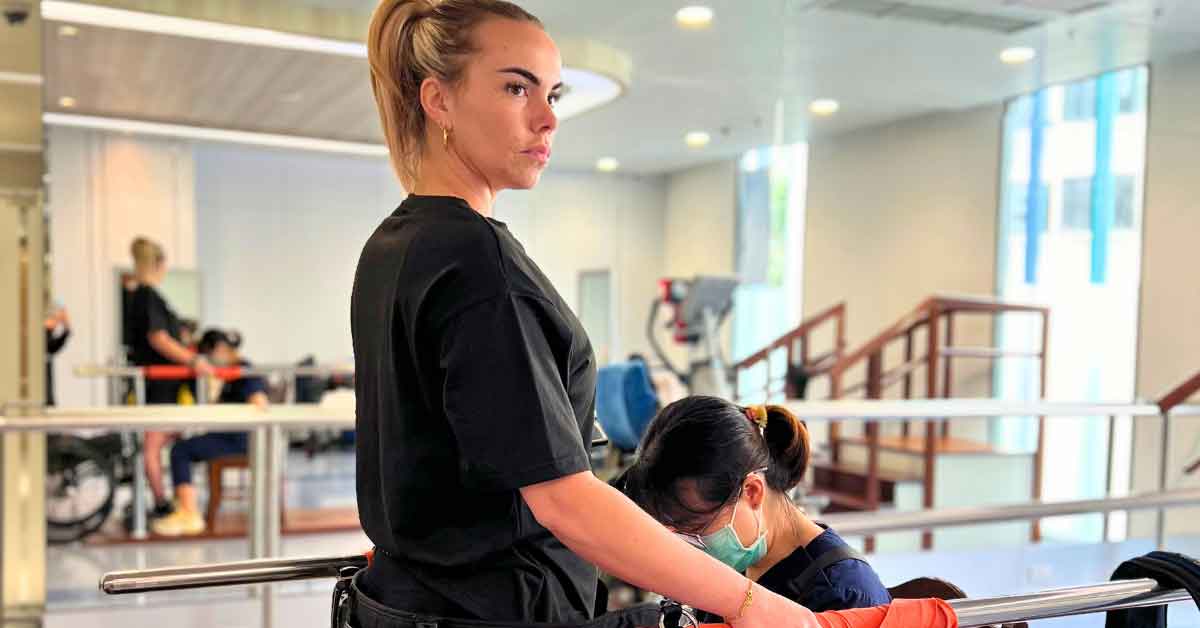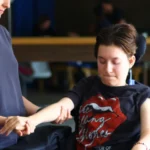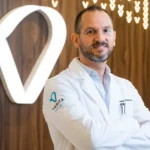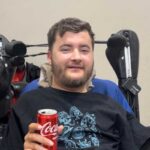In a recent webinar, Dr Nasir and Patient Representative, Vea were joined by Julia, a T6-T7 complete spinal cord injury patient from the Netherlands, who shared her experience of epidural stimulation and stem cell treatment she received at our hospital in Bangkok.
Please introduce yourself and tell us about your injury
I’m Julia, from the Netherlands. Before my accident, I led an active life. About 8 months ago, I got injured in a car accident. Now, I am paralyzed from halfway down my chest, a condition known as a complete spinal cord injury.
What treatment had you received before coming to Thailand?
Before coming to Thailand, I spent three months in a clinic in the Netherlands for rehabilitation. This helped me to become self-independent to some extent, but I felt I needed more specialized treatment to improve further, which led me to Verita Neuro.
What treatment are you receiving with Verita Neuro?
I am undergoing a treatment that includes epidural stimulation and stem cell therapy. This program is designed to help with spinal cord injuries, and it involves both technological and physical rehabilitation methods.
Dr Nasir, how did you and the team approach Julia’s treatment plan?
Regarding Julia’s treatment plan, we chose a combination of epidural stimulation and stem cell therapy to provide a comprehensive approach to her spinal cord injury. The decision to use mesenchymal stem cells was based on their potential to reduce inflammation and promote healing in the nervous system. These cells have shown promise in improving outcomes for spinal cord injury patients by supporting the regeneration of damaged neural tissues and reducing the formation of scar tissue that can impede neural recovery. We believed that this tailored approach, integrating both the mechanical and biological aspects of healing, would offer Julia the best opportunity for recovery and improvement in her quality of life.
How is Verita Neuro's treatment approach different compared to others?
Verita Neuro’s treatment approach is significantly different from what I experienced elsewhere. They offered a highly personalized and integrated treatment plan that combined epidural stimulation and stem cell therapy, which I hadn’t encountered in my previous care in the Netherlands. The level of attention and customization in my treatment plan, considering my specific injury and needs, was far beyond what I had experienced before. They used advanced technology and a multidisciplinary team that worked closely with me, constantly adjusting the treatment based on my progress and response. This holistic and patient-centred approach made me feel more supported and hopeful about my recovery journey.
What improvements have you seen since epidural stimulation surgery and stem cell treatment?
I noticed significant improvements since the surgery and stem cell treatment. Right after the surgery, I was able to lift both of my legs, which was a big step forward. Within just three days after starting the mapping process, I saw direct results. I could stretch my legs and move them, which was a great achievement for me. Also, one of the most important improvements was the reduction of my nerve pain. The stimulation worked on my nerves, and now I have almost no nerve pain, which has positively impacted my daily life. Besides, I have become much stronger, both in my arms and legs, and I’ve gained more muscle in my legs. Finally, I’m very happy that I’m able to stand and walk again. It’s been a significant change for me, especially for my blood circulation and overall confidence.
Can you talk us through what a typical day of treatment looks like?
My typical day of treatment at Verita Neuro involves around 5 hours of training. It starts with 2 hours of mapping with a specialist, then I have an hour of stretching and exercises to improve my balance, followed by another 2 hours of mapping. This intensive routine aims to strengthen my body and enhance my recovery.
You talk about mapping, in your own words, can you please describe what it is and how it works?
Mapping, from my experience, is a process where the medical team tests different settings on the neurostimulator to find the best ones that help me move my legs and improve my strength. It involves trying various stimulation patterns to see which ones trigger muscle movements effectively. During my sessions, the specialists adjusted the device’s settings, and we observed how my muscles responded. It felt like a detailed experiment, finding the right combinations to help me regain movement and control.
And Dr. Nasir's is there anything you would like to add from a medical explanation of mapping
Mapping is a critical component of epidural stimulation therapy. It involves configuring the neurostimulator’s electrical impulses to target specific nerve pathways in the spinal cord. This process is done to identify the optimal settings that facilitate movement and function in the affected limbs. We use real-time feedback from the patient’s muscle activity and movements to adjust the stimulator’s parameters. The goal is to achieve the best possible motor response with the least amount of stimulation, thereby aiding in the patient’s rehabilitation and improving their motor function.”
How will you continue your therapy at home?
Now that I’m back home, I’m finding new ways to maintain and progress in my recovery. I practice every day, following a schedule that includes using the stimulator and doing exercises. I also have a walker at home, which enables me to stand and practice walking.
What are your goals for the future?
My long-term goal is to improve my ability to stand better and walk better. I plan to return to Verita Neuro in 6 months for more stem cell treatments and to do remapping. I hope that with a lot of training, both at home and at Verita, I will become better balanced, able to stand on my own and walk faster and farther.
What has been your biggest achievement?
My biggest achievement since starting treatment has been the ability to lift my legs shortly after the surgery, significantly reduce my nerve pain, and regain strength in my arms and legs. Being able to stand and walk again, even if just for short distances, has been a major milestone for me.
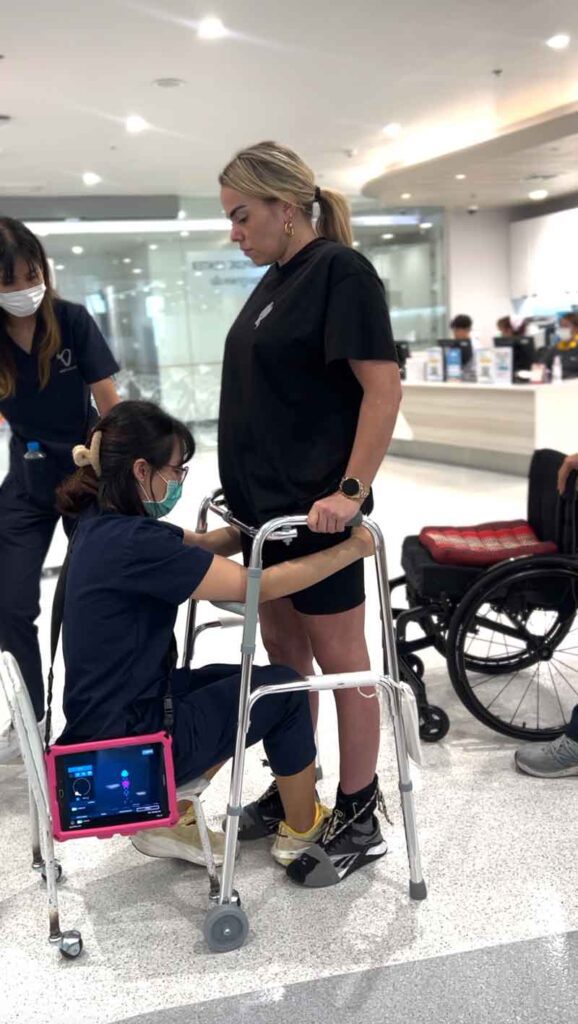
Do you have any advice for those considering epidural stimulation treatment?
My advice is to go for it. It has been an amazing experience for me. For anyone with a spinal cord injury, exploring treatments like epidural stimulation can be life-changing. It’s important to have trust in the process, believe in yourself, and never give up hope for recovery. Even when things seem dark, keep pushing forward, because improvement is possible.
Is there any other message you’d like to give?
Yeah. Just maybe for the people who are watching with just recently got injured. That’s what they don’t have to get. They don’t give up, and that’s what they have. They need to have trust. because it’s maybe now a dark side, but it will become better. And just when you believe in yourself and your body, then you will recover. And yeah, don’t give up.
And Dr Nasir, is there anything else you would like to add?
For those considering this treatment, it’s important to have a realistic understanding of the potential outcomes and be committed to the rehabilitation process. Success depends on a combination of the right medical intervention and the patient’s dedication to recovery.
For patients with spinal cord injury, neurological disorders or traumatic brain injury, regenerative treatment from stem cells can offer excellent results. We have seen patients experience incredible improvements in their conditions, from regaining sensory functions to improving motor functions, such as stepping and balance. To learn more about all the regenerative treatment protocols available through Verita Neuro, and the possible improvements you could see, get in touch with our expert team.
The above is not a verbatim transcript of Julia’s interview. Some comments have been altered or re-arranged to improve the reading flow. You can see the full interview on our YouTube channel.

